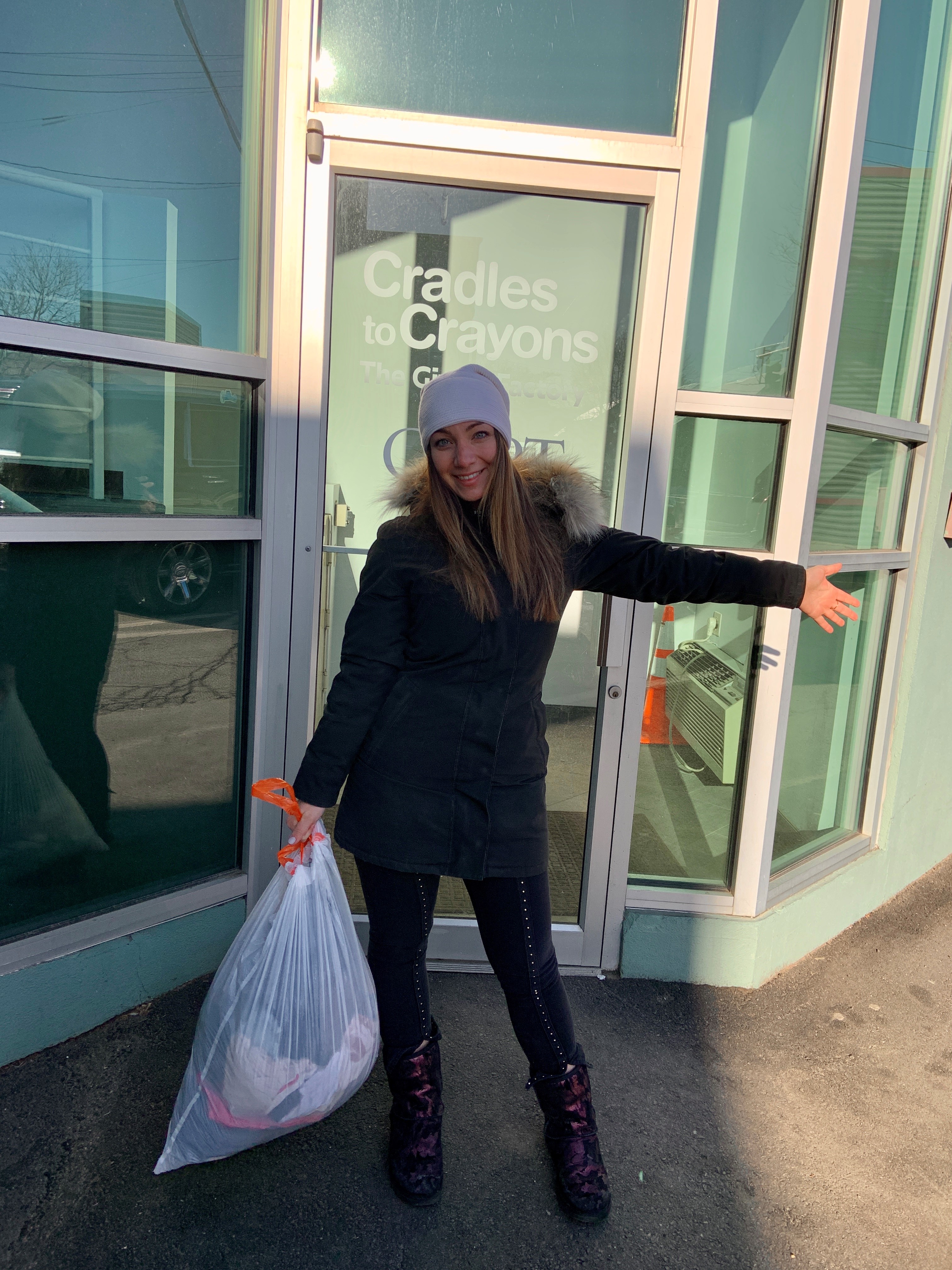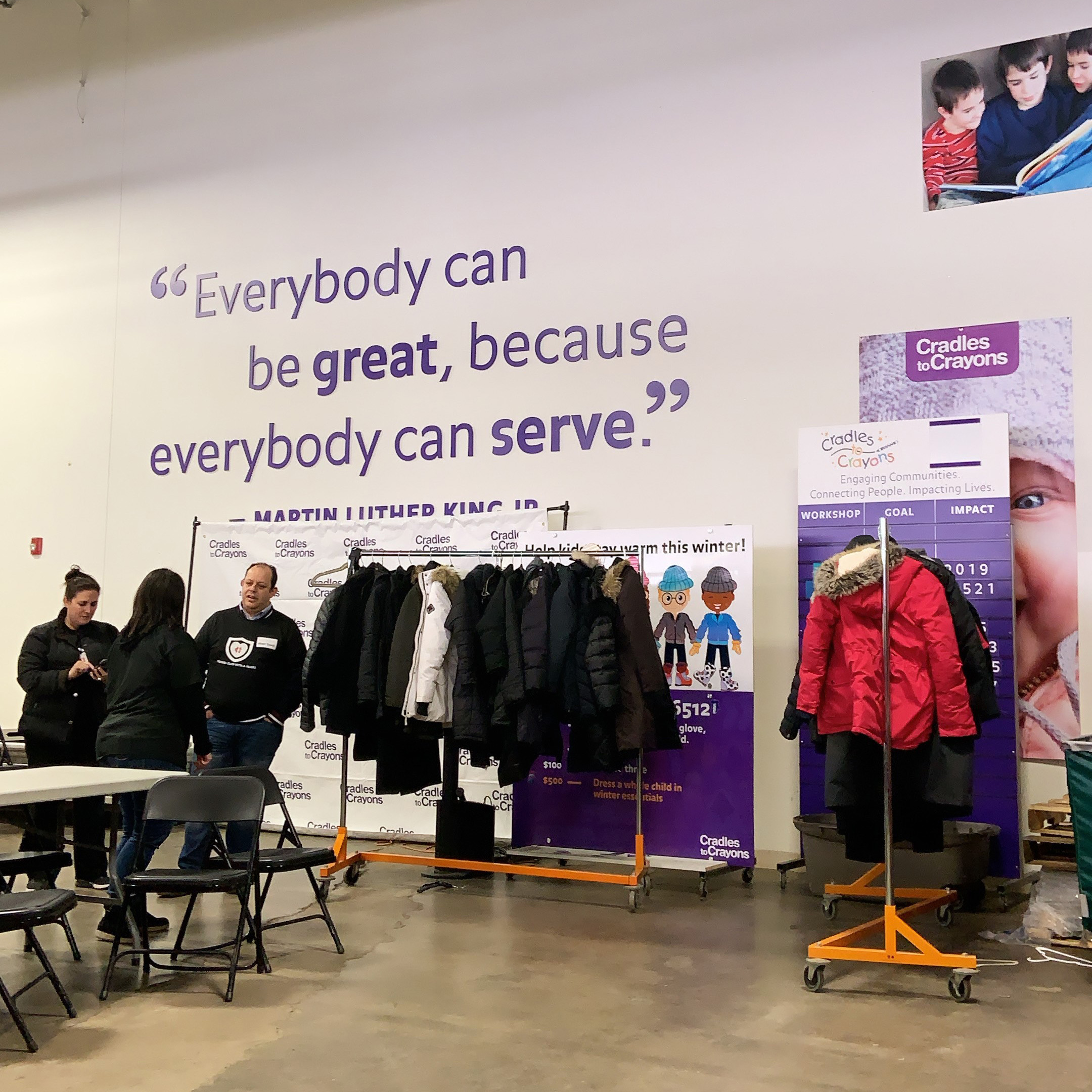Give & Take: Environmental Impact on Education & How Cradles to Crayons Helps
Growing up, it’s safe to say that we don’t understand how environments shape us. We know that people are different – kids have different home lives, parental figures, clothes, and more. But we don’t necessarily understand why those differences exist, or how they impact us. I’ve always been interested in people – how they change, grow apart, and how their environment has shaped them. I question how much is influenced by nature? And how much by nurture? It’s easy to get caught up wondering why people are who they are and why they do what they do. Everyone’s path is different, to say the least, and I feel fortune to have taken mine.
My upbringing was unique. I’m the only child of two Russian immigrants who came to Boston in 1989 with nothing. My family didn’t speak English, and to this day, my grandparents still aren’t fluent in anything except their native tongue. I was born in the U.S., but didn’t speak a word of English until I was six. As children are resilient, I learned quickly and assimilated into the American culture – but it wasn’t without its challenges. My peers bullied me, I was often excluded and couldn’t sit with the “cool kids” on the back of the bus. When I started making friends and they began staying over for dinner, they didn’t hold back criticizing what was served. As much as they were culture shocked entering my home, I was just as shocked entering the American education system. It took years until I felt comfortable being an “outsider” in my small town, and it wasn’t until I moved to a new high school that I began meeting people of different upbringings, like myself. It was then that I realized how much your childhood and environment impact your ability to grow and learn.
 Last month, I volunteered at a charity called Cradles to Crayons, an organization that provides children up to age 12 with the everyday essentials they need — at home, at school, and at play — in hopes for a future free of childhood poverty. Volunteering was held in a massive warehouse outside of Boston and it was incredibly well-organized. There were sections for clothes, toys, school supplies, accessories, diapers, water and more. My shift had nearly 40 volunteers of all ages and backgrounds. We spent three hours organizing clothing for kids, putting it into gift bags and picking up newly donated gifts for them ahead of Christmas. I felt profoundly impacted seeing that nearly half of the volunteers were children the same age as the ones who we were helping in poverty-stricken situations. There’s something beautiful about seeing how these children were trying to give-back to their peers in an effort to help better their childhood.
Last month, I volunteered at a charity called Cradles to Crayons, an organization that provides children up to age 12 with the everyday essentials they need — at home, at school, and at play — in hopes for a future free of childhood poverty. Volunteering was held in a massive warehouse outside of Boston and it was incredibly well-organized. There were sections for clothes, toys, school supplies, accessories, diapers, water and more. My shift had nearly 40 volunteers of all ages and backgrounds. We spent three hours organizing clothing for kids, putting it into gift bags and picking up newly donated gifts for them ahead of Christmas. I felt profoundly impacted seeing that nearly half of the volunteers were children the same age as the ones who we were helping in poverty-stricken situations. There’s something beautiful about seeing how these children were trying to give-back to their peers in an effort to help better their childhood.
This put things in real perspective – poverty, opportunities and education go hand in hand. The constraints that poverty often places on the lives of children impacts their health, access to resources, language development and literacy, along with the ability to have healthy relationships. I never knew how many children were living under the so-called ‘poverty line,’ defined as the level of income needed to meet the minimum living conditions, and how such conditions influence learning and academic achievement until I saw the warehouse dedicated to serving them.
 For background, according to Child Trends Databank, in 2017, nearly 4 in 10 children (39 percent) under age 18 in the U.S. were living in low-income situations. And it didn’t occur to me that Massachusetts had so many young kids living through financial challenges until sorting through the vast array of donations at Cradles to Crayons. It became clear to me when seeing everyone come together, that people in poverty are as diverse as people in any other socioeconomic class. Poverty affects many factors that the organization is working hard to better, and in turn, may help ratify the outcomes for our future generations. Below are some of the factors impacting a child’s future and the areas Cradles to Crayons touches:
For background, according to Child Trends Databank, in 2017, nearly 4 in 10 children (39 percent) under age 18 in the U.S. were living in low-income situations. And it didn’t occur to me that Massachusetts had so many young kids living through financial challenges until sorting through the vast array of donations at Cradles to Crayons. It became clear to me when seeing everyone come together, that people in poverty are as diverse as people in any other socioeconomic class. Poverty affects many factors that the organization is working hard to better, and in turn, may help ratify the outcomes for our future generations. Below are some of the factors impacting a child’s future and the areas Cradles to Crayons touches:
- Education and Literacy Development: Children in poverty often have less access to resources due to financial barriers. Cradles to Crayons offers binders, writing utensils, backpacks and more to give kids the foundational tools they need to succeed in school.
- Physical Means: Poverty impacts both environmental and material needs. Often children have limited access to critical clothing needed in certain regions like the Northeast. Cradles to Crayons supplies children with things like snow boots, warm coats, hats, gloves, scarves and more.
- Socialization: When in poor economic conditions, there is little access to toys and opportunities that allow kids to socialize with others. Cradles to Crayons offers unopened toys to children of all ages and genders to help close the gap.
If interested in volunteering at Cradles to Crayons or donating supplies or lightly worn goods, please visit https://www.cradlestocrayons.org/. ![]()
